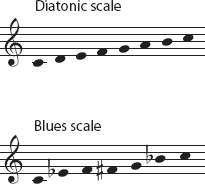William Grant Still, Afro-
Still’s first symphony — he had already composed two symphonic poems and several suites of orchestral movements — proclaims loudly his black musical roots even in its title. But it also stakes his claim to participation in the European symphonic heritage.
On the one hand, it employs a fairly conventional Romantic orchestra, if one augmented with a few unexpected instruments — including a tenor banjo. Also in line with European tradition, it falls into four movements with mostly conventional tempos and forms. A fast first movement in a modified sonata form leads to a slow, melodic second movement and a quick, dancelike third — just as we might expect in symphonies from the nineteenth century. The music usually gives a clear sense of key and tonic; this is not atonal music in the manner of Schoenberg or Crawford.

On the other hand, the melodies, harmonies, and rhythms throughout the symphony have the flavor of jazz and blues. In rhythm, this involves particularly syncopation, or accented notes off the beat of the meter (see page 7). The melodies and harmonies, meanwhile, tend to be built not from the diatonic scale of European classical music (see page 23), but rather from the scale used by blues and jazz musicians. This blues scale differs at several points from the diatonic scale, as can be seen in the comparison of the two in the margin.
Throughout the symphony, Still shows one of his trademarks: a skillful use of orchestral colors achieved especially through alternating choirs of string, woodwind, and brass instruments.
Fourth Movement (Lento, con risoluzione) The fourth and last movement of the symphony shows particularly clearly the impact of Still’s mixing of European and African American styles. It is cast in something close to the traditional rondo form we might expect in a symphonic finale. But it takes a slow tempo and offers, as its main A theme, a blues-
The contrasting B theme is more lively; it is a version of a blues melody that dominates the first movement of the symphony. In the finale it is at first developed in several variations. It returns in an even quicker episode toward the end of the movement, where Still contrives to merge it with the gradual reappearance of A.
In one of his notebooks, Still titled this movement “Aspiration.” He also associated each of his movements with verses from the black poet Paul Laurence Dunbar (1872–